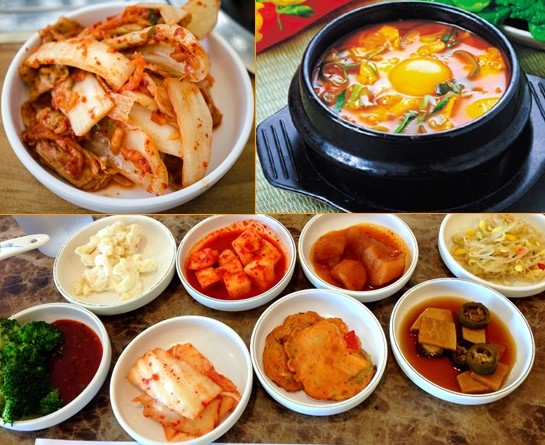Korea has become the center of global attention not only from the flashy and mesmerizing K-dramas and K-pop realms. Korean food is increasingly gaining global acceptance owing to the associated health benefits. These dishes are from centuries ago and are embedded deeply within the Korean culture, The dishes have been fused with a pinch of modernity giving them a refreshing and comforting vibe. Here are some of the healthiest Korean foods.
1. Kimchi
Kimchi is Korea’s most globally acknowledged food. Kimchi is a fermented and salted vegetable infused with other vegetables, seasonings, and chili powder. Although there are various types of kimchi, including radish kimchi, the most famous is the Chinese cabbage kimchi. The best part about kimchi is that it can be eaten raw; just after preparation, or eaten months after preparation. Kimchi has a sweet spicy and sour taste that goes well with all foods, especially boiled rice. Kimchi is loved for its health benefits as it is filled with nutrients; including vitamins C and K, from the used vegetables. After fermentation, Kimchi is best loved for its probiotics linked to the prevention and treatment of several health conditions including gastrointestinal health and certain types of cancer. Kimchi can be eaten alongside any food including being cooked in soups.
2. Bibimpap
Bibimpap is rice served alongside various vegetables and pieces of seasoned ground beef. The mixture of nutrients, including proteins and vegetables makes bibimpap the go-to for a healthy balanced diet. Most of the vegetables are only stir-fried and seasoned giving them a sweet and crunchy feeling. The infused pickled vegetables also give bibimpap a sour sweet taste and probiotic properties good for one’s health. The running egg and rarely done meat further accentuate the dish’s health and taste properties.
3. Sundubu Jjigae
Sundubu Jjigae is among Korea’s most popular stews alongside Kimchi Jjigae and Budae Jjigae. In Korean, “Jjigae” translates to soup while “dubu” translates to tofu. Sundubu Jjigae is a soft tofu stew loaded with delicious seafood and vegetables. Tofu is a high protein with low cholesterol and contains calcium, iron, vitamin D, and vitamin B. The added vegetables and seafood also contribute to Sundubu Jjigae’s healthy status. The dried kelp and anchovy stock give the dish a rich meaty taste and aroma.
4. Gimbap
Gimbap is also known as seaweed rice rolls and is made up of vegetables, meat, and cooked rice rolled in dry seaweed. Gimbap is often confused with sushi rolls, but unlike sushi, gimbap doesn’t contain raw fish. This colorful dish contains a variety of ingredients of different nutritional value making gimbap a balanced-diet meal. Most of the used vegetables are either stir-fried or pickled giving the dish a crunchy and delicious taste.
5. Kongguksu
Kongguksu is a summertime noodle dish that is served in cold creamy soy milk broth. “Kong” means soybeans while “guksu” means soup translating “koongguksu” to soy milk noodle soup. The noodles in the dish are made from wheat flour. Soy is a high-quality plant protein and a good source of various minerals and vitamins including vitamin K1, iron, and manganese. One of the most used toppings is boiled eggs and grated cucumber which add to Kongguksu’s healthy status.
—-Karen Mwenda
#kongguksu #5healthiestKoreanFoods #kcrush #healthykoreanfoods #kimbap #kcrushcontent #guksu #Koreanfoods #SundubuJjigae #topasianentertainmentmagazine #googleindexed #kcrushamerica #soymilknoodlesoup #bibimpap #kimchi #probiotics #gastrointestinalhealth
The post 5 Healthiest Korean Foods appeared first on K Crush America Magazine.




